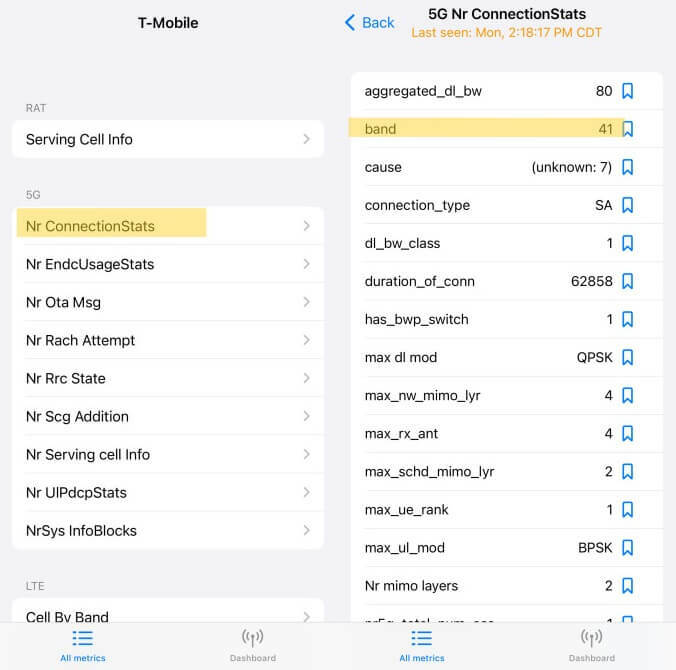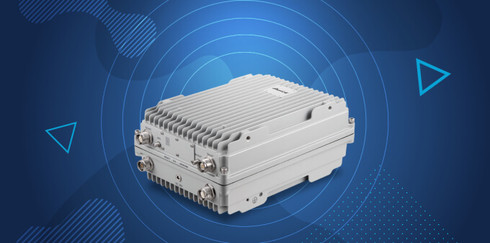Ultimate Guide to C Band 5G
What Does C Band Mean for 5G?
5G is the 5th generation mobile network, meant to deliver higher speeds, lower latency, and greater capacity than ever before. Among the entire 5G spectrum, the 5G C Band is particularly noteworthy. Keep reading to learn all there is to know about C Band.
Take advantage of our system design and installation services. Learn more or call us for a free consultation: 1-800-969-8189.
What is C Band?
C Band is a radio frequency ranging from 3.7 GHz to 4.2 GHz. Since the 1970s, it’s been traditionally used for satellite communication and other industrial applications. As of 2020, the FCC cleared up and auctioned C Band spectrum for 5G use.
C Band is seen as the sweet spot of 5G. It operates between frequencies 3.7 GHz to 3.98 GHz. Compared to the lower and higher 5G frequencies, it offers the perfect blend of speed, capacity, coverage, and propagation.
What are the Advantages and Limitations of C Band?
5G uses three spectrum ranges: low band (<1 GHz), mid band (1 GHz to 6 GHz), and high band (24 GHz to 39 GHz).
Low band 5G frequencies can travel longer distances and penetrate obstacles better, providing great coverage. However, they do not provide the fastest speeds or best capacity. Performance is comparable to 4G. Meanwhile, high band 5G frequencies offer blazing-fast data speeds and insane capacity, but they have limited range and can’t penetrate buildings well.
C Band, which sits within the mid band spectrum, is the perfect middle ground. It performs significantly better than low band, providing speeds between 100 Mbps to 500 Mbps. While not as fast as high band, it can reach farther and penetrate obstacles better, delivering greater coverage. Whether for the day-to-day user or large businesses, this opens the door to remarkable advancements for enhanced productivity, IoT applications, and fixed wireless internet.

Its main limitation is that not all buildings are C Band friendly. Metal, concrete, Low-E glass, and other materials heavily attenuate C Band signals. This results in little to no C Band 5G coverage throughout homes and businesses, preventing users from experiencing the true capabilities 5G has to offer.
Who Has C Band?
Verizon, AT&T, and T-Mobile all have C Band spectrum. Though, not every carrier has rolled out its C Band network.
Out of the big three mobile carriers, Verizon has the most. They secured between 140 and 200 MHz of C-Band spectrum in every available market. AT&T comes in second. They have access to a minimum of 100 MHz of total mid-band spectrum in the contiguous United States and an average of 120 MHz nationwide. Rollouts began in 2022.
T-Mobile did not invest as much as the other two carriers in the C Band auction as they’ve been focusing on building out their lower 5G spectrum. They won an average of 40 MHz of C Band spectrum in key areas. However, it has not yet been rolled out. Deployment is set to start in 2024.
Even though T-Mobile is a bit behind in the C Band game, OpenSignal’s report shows they are still leading the 5G race in terms of speed and availability.
Does C Band Affect Aviation Communication?
Frequencies in the C Band spectrum allocated for 5G use are close to those used by aircraft altimeters, which measure the distance between planes and the ground. They are crucial instruments for landing, especially during low visibility. Thus, before the original deployment of C Band 5G in late 2021, the FAA (Federal Aviation Administration) raised concerns regarding harmful interference that can cause incorrect or loss of altitude data, posing a safety risk.
While there are no reports proving that C Band 5G does indeed interfere with air traffic, carriers worked closely with the FAA to address their concerns. They agreed not to deploy C Band 5G within 2 miles of airport runways. Additionally, the FAA put rules in place that require airlines to use 5G C-Band-tolerant radio altimeters or install an acceptable radio-frequency filter to mitigate interference.
How Can I Connect to C Band?
You will automatically connect to your carriers’ C Band networks if using a compatible phone in an area where it’s available.
All 5G devices that support bands n77 and n78 will work with the Goldilocks spectrum. You’ll need to check your device’s specifications to identify its compatibility.
Pinpointing where the network is available is a bit more complicated. There is no map available that clearly displays that information. The best way to figure out if you’re connected to C Band 5G is by checking the frequency you’re on using a signal detection app for Androids or field test mode for iPhones.
Our favorite app is Network Cell Info Lite. Upon opening it, the frequency band you’re connected to will be displayed on the top right. iPhone users will need to dial *3001#12345#* to access field test mode, tap NrConnectionStatus, and look for the band field. If you see band n77 or n78, you’re connected to the C Band 5G network.

Can I Enhance C Band Reception Indoors?
As mentioned earlier, even if you’re in an area where C Band 5G is available, it can be difficult for those 5G signals to penetrate buildings. Luckily, C Band cell phone signal boosters are beginning to roll out. They take existing signals operating on frequencies 3.7 GHz to 3.98 GHz and deliver them even stronger indoors, significantly enhancing in-building mid-band 5G coverage and speed. Here is our top recommendation:
SureCall SpeedLink 5G C-Band Commercial Signal Booster
- Boosts C Band 5G Signals
- 2X2 MIMO
- Verizon Approved
- Quick Deployment with Professional Installation
Top-of-the-line SureCall SpeedLink 5G C Band signal booster for commercial spaces. Powerful, it significantly improves 5G coverage, provides ultra-fast data speeds up to 1 Gbps, and increases capacity. Verizon approved right out of the box, it's ready for instant deployment. Unlike other comparable units, obtaining carrier approvals, which can take weeks, is not necessary. For total coverage, it can be easily used alongside a 4G signal booster.
If you’re ready to transform your C Band connection, give us a call at 1-800-420-3211 or email us at sales@signalboosters.com. We are the leading providers of 4G and 5G signal boosters and accessories. Our signal experts are ready to help! As certified SureCall installers, we also offer turnkey installations for the SureCall SpeedLink 5G.






